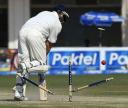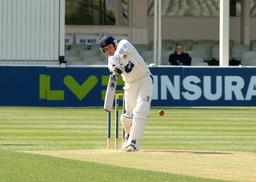What cricket can learn from Dr Atkins and his diet
 Remember when 'The Atkins Diet' was all the rage with celebs, housewives and anyone else wanting to lose weight? It was the fad that sold in it's millions and was totally ignored by club cricket the world over.
Remember when 'The Atkins Diet' was all the rage with celebs, housewives and anyone else wanting to lose weight? It was the fad that sold in it's millions and was totally ignored by club cricket the world over.
It's time for a rethink though.
The good doctor may have had a point. Contrary to common belief, low carb eating can actually boost your cricket performance.
How monitoring your heart rate can help your cricket training
This guest post is by Liz Ward
Although the game takes such a long time, the average cricketer spends most of their time not doing very much at all.
However, when they are called into action it is, more often than not, explosively: Sprinting to bag that catch, sprinting to save that four, charging up the wicket, charging up again only to get half way up and having to perform a miraculous, momentum defying, 180 degree about turn to get back to safety!
7 ways to creatively train when you think you can’t
Do you have trouble motivating yourself to train for cricket? Everyone has trouble from time to time, but consider the plight of an Indian coach who emailed me recently:
"I am training a senior cricket team and we are preparing for a tournament in another 15 days. The rains have started and net sessions are impossible. We don't have indoor nets. The only places we have is a small gym and a concrete car park. I have to take care of 50 players who are in the camp. Please suggest me something to keep them involved."
Is it possible to plot a batting collapse?

"Bowling sides should have a set of pre-determined plans about how to initiate and maintain an incipient batting collapse: Which bowlers will be used in what order, what will be their role, what field settings are most helpful, optimum rate of overs, and the psychology of inducing 'mental disintegration' among the incoming batters.
Readers Tips: Top 5 things I have learned about cricket fitness
I recently asked regular reader, contributor and cricketer Danny Belo what were the top things he has learned about cricket fitness in the last year. Here is what he came up with.
- Specificity. The main idea here is that you have to train your body as close to game fitness as possible. I.e. Don't go for a marathon run as it's not similar to anything you would do in the game.
7 things that will make you worse at cricket

- Playing to get fit not getting fit to play. If you want to get the best out of your cricket performance you need to play cricket. However, you also need to be ready to play cricket by being strong, fast, agile and have good movement skills. These are transferable fitness skills that provide you with a base to put your cricket skills on top. The best way to get there is via a functional sport training plan. This can be as simple as a couple of bodyweight training sessions a week or as complex full year plan.
Core stability for cricket: A dummies guide
This guest post is by Liz Ward
If I were to ask you what the essential determinants of success for all sports people are, not just cricketers, would you include core strength and stability?
All cricketers need to be able to generate powerful movements in their arms and legs (try batting, bowling or fielding without powerful movements!). The only safe way to achieve this is to create a solid base of support by stabilising the spine, pelvis and shoulders through 'core' muscle contraction.
Score More Runs By Playing the Gaps
 First class players are coached early on to be aware of the field and place their shots into gaps to increase their run scoring chances. At lower levels, this is emphasized less, but you can use the tactic to score more runs.
First class players are coached early on to be aware of the field and place their shots into gaps to increase their run scoring chances. At lower levels, this is emphasized less, but you can use the tactic to score more runs.

